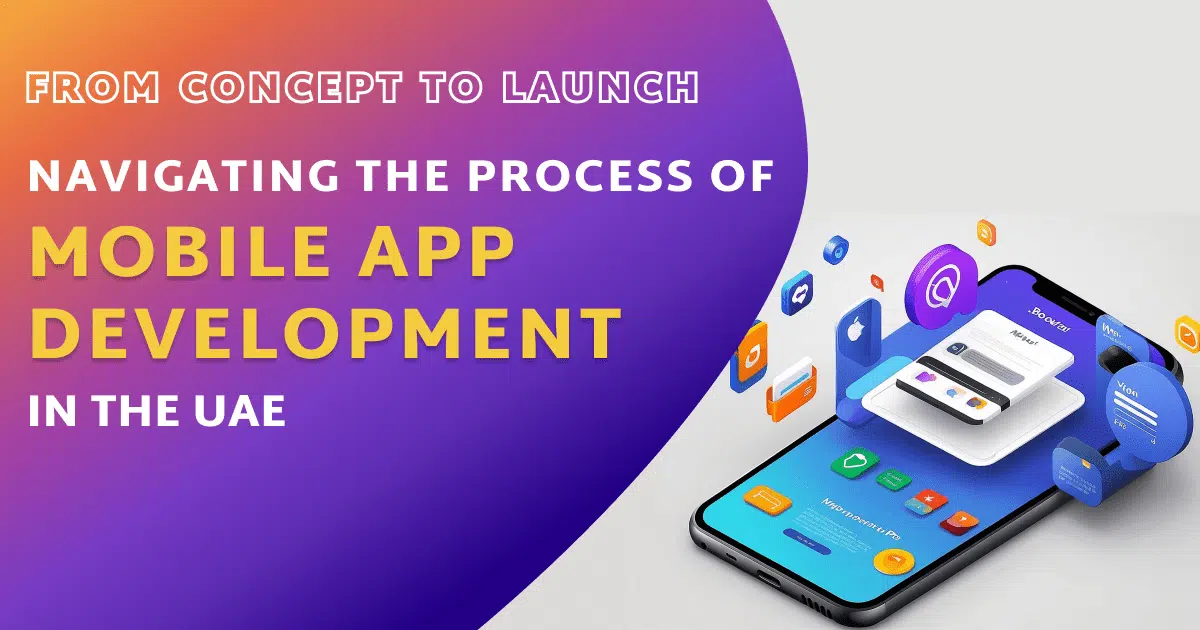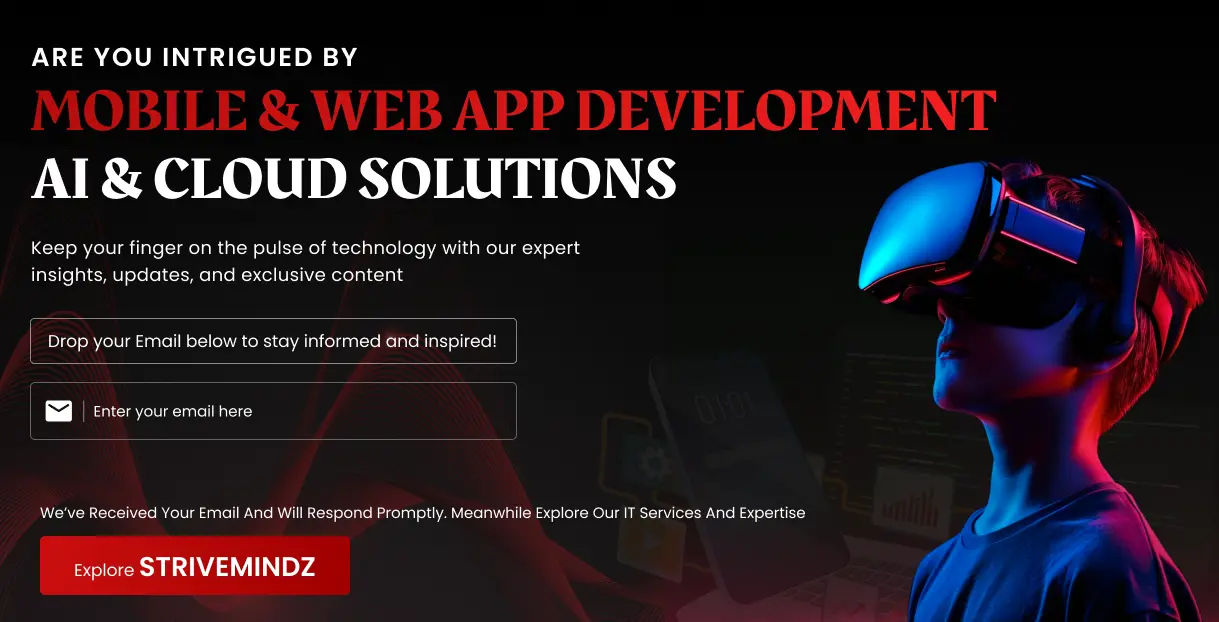From Concept to Launch: Navigating the Process of Mobile App Development in UAE

Mobile app development in UAE is a dynamic and rapidly growing industry, fueled by a tech-savvy population and a thriving business ecosystem. From startups to established enterprises, the demand for innovative mobile applications continues to rise, presenting opportunities and challenges for developers and businesses alike.
In this article, we will explore the comprehensive process of taking a mobile app from concept to launch in the UAE, delving into key stages such as conceptualization, planning, development, localization, launch strategies, post-launch maintenance, and legal considerations.
By understanding the unique landscape of mobile app development in UAE, businesses and developers can effectively navigate the complexities of this vibrant market and maximize the potential of their mobile app ventures.
Introduction to Mobile App Development in UAE
Ah, the world of mobile app development in UAE – where innovative ideas come to life faster than you can say “download now!” In this bustling tech hub, creativity and technology collide to create apps that cater to the diverse needs of users.
Overview of the Mobile App Industry in the UAE
The mobile app industry in the UAE is a thriving ecosystem filled with opportunities for developers and entrepreneurs alike. With a tech-savvy population and a strong digital infrastructure, the UAE offers a fertile ground for launching successful mobile apps.
Market Trends and Opportunities
From food delivery to fitness tracking, the mobile app market in the UAE is brimming with possibilities. Keep an eye on trends like AR/VR integration, artificial intelligence, and personalized experiences to stay ahead in this competitive landscape.
Researching Your Target Audience and Competitors for Mobile App Development in UAE
A successful mobile app in the UAE hinges on understanding your target audience and the competitive landscape. Here’s how to conduct effective research:
Target Audience:
- Demographics: Consider age, gender, income level, location (within UAE) and any other relevant demographic factors that might influence app usage.
- Tech habits: Research how your target audience uses mobile apps. What types of apps do they use most frequently? What features do they value?
- Needs and pain points: Identify the problems your app aims to solve for users. What are their frustrations and unmet needs? How can your app make their lives easier or better?
- Online behaviour: Where does your target audience spend their time online? Look at social media platforms, app stores, and relevant websites to understand their online habits and interests.
Research Methods:
- Surveys and questionnaires: Create targeted surveys or questionnaires to gather data directly from your potential audience.
- Social media listening: Use social media listening tools to monitor conversations and understand user sentiment around your app’s niche.
- Market research reports: Utilize existing market research reports on mobile app usage in the UAE to gain insights into user trends and preferences.
- App Store analytics: Analyze popular apps in your target category to understand user behavior and identify potential gaps in the market.
Competitor Analysis:
- Identify your competitors: Research existing apps that address similar problems or cater to the same target audience.
- Analyze their strengths and weaknesses: Evaluate your competitors’ features, UI/UX, marketing strategies, and pricing models. Identify areas where your app can offer a unique value proposition.
- App store reviews: Read user reviews of competitor apps to understand user pain points and identify opportunities for improvement in your own app.
Planning Your Mobile App: Features, Design, and Timeline in the UAE
Having a well-defined plan is crucial for a successful mobile apps launch in the UAE. Here’s a breakdown of the key planning stages:
-
Define App Features
- Prioritization: List all the features you envision for your app. Analyze their importance and feasibility. Prioritize features based on user needs, your budget, and development complexity. Start with a Minimum Viable Product (MVP) that offers core functionalities and gradually add features based on user feedback.
- User stories: Develop user stories that describe how different user types will interact with your app to achieve their goals. This helps visualize the app’s functionalities from a user’s perspective.
- Competitive analysis: Leverage your competitor research to identify features users find valuable and areas where your app can offer a unique selling point.
-
Design and User Experience (UX)
- User interface (UI) design: Develop a user-friendly and visually appealing UI that caters to the UAE user’s expectations. Consider cultural factors when designing icons, layouts, and color schemes.
- User experience (UX) flow: Plan the user journey through your app. Ensure a smooth and intuitive flow that guides users towards completing desired actions.
- Wireframing and prototyping: Create wireframes and prototypes to visualize the app’s layout and user flow. This allows for early testing and identification of usability issues before extensive coding begins.
-
Development Timeline
- Feature complexity: Estimate the development time for each feature based on its complexity. Consider factors like database integration, third-party API usage, and animations.
- Team size and resources: The size and experience of your development team will significantly impact the development timeline. Be realistic about the resources available.
- Development approach: Native development typically takes longer but offers better performance. Cross-platform development can be faster but might have limitations. Factor in your chosen approach when creating the timeline.
- Buffer time: Allocate buffer time in your timeline for unexpected challenges or bug fixes that may arise during development.
Design: From Wireframes to Polished UI Mockups for your UAE Mobile App
The design phase is where your mobile app’s functionality and user experience come to life visually. In the context of the UAE market, cultural considerations add another layer to the design process. Here’s a breakdown of the key design stages:
-
Wireframing
- Low-fidelity representation: Wireframes are basic, low-fidelity blueprints that focus on the app’s layout and information architecture. Think of them as rough sketches that outline the placement of essential elements like buttons, menus, and content areas.
- Focus on functionality: At this stage, aesthetics are secondary. The goal is to define the user flow and ensure a logical structure that facilitates intuitive navigation.
- Tools for wireframing: You can create wireframes using pen and paper, online wireframing tools, or design software.
-
User Interface (UI) Mockups
- Building on wireframes: Mockups take your wireframes a step further by adding visual design elements like colours, fonts, icons, and imagery.
- Reflecting brand identity: Mockups allow you to incorporate your brand’s visual identity, making the app feel cohesive and recognizable.
- Considering cultural aspects: When designing for the UAE market, be mindful of cultural sensitivities. Use colours, fonts, and imagery that resonate with your target audience. For instance, consider right-to-left (RTL) text layouts if your app will be offered in Arabic.
- Testing and iterating: Share your mockups with potential users and stakeholders to gather feedback. Use this feedback to iterate on your design and ensure it meets user expectations.
Development: Coding, Testing, and Debugging the Mobile App
The development phase is where your mobile app design transforms into a functional reality. Here’s a breakdown of the key stages involved in developing your app for the UAE market:
-
Coding the App
- Native vs. Cross-platform development: Your chosen development approach (native or cross-platform) will determine the programming languages used. For native development, you’ll need separate codebases for iOS (Swift or Objective-C) and Android (Java or Kotlin). Cross-platform development uses frameworks like React Native or Flutter that allow you to write code once and deploy to both platforms.
- Development environment: Your development team will use Integrated Development Environments (IDEs) specifically suited for the chosen languages and platforms. These IDEs provide tools for writing, editing, testing, and debugging code.
- APIs and integrations: If your app relies on external data or services, you’ll need to integrate with relevant APIs (Application Programming Interfaces). This might involve additional coding and authentication processes.
-
Testing and Quality Assurance (QA)
- Rigorous testing process: Thorough testing is crucial to ensure your app functions flawlessly and delivers a smooth user experience. Testing should encompass various aspects like functionality, performance, compatibility, security, and localization (if applicable).
- QA team: Ideally, a dedicated QA team should conduct rigorous testing throughout the development process. They will identify and report bugs or glitches for developers to fix.
- Device and emulator testing: The app should be tested on a variety of real devices with different operating system versions and screen sizes. Additionally, emulators or simulators can be used to test on a wider range of devices.
-
Debugging and Refinement
- Bug fixing: Based on QA reports, developers will fix bugs and address any technical issues identified during testing.
- Iterative process: Development is rarely a linear process. Be prepared to iterate on your design and functionalities based on testing results and user feedback (if applicable at this stage).
Integrating Your Mobile App with Backend Systems and APIs in the UAE
A well-designed mobile app often relies on communication with backend systems and APIs (Application Programming Interfaces) to function effectively. This exchange of data is crucial for tasks like user authentication, data storage, processing complex tasks, and delivering personalized experiences. Here’s a breakdown of mobile app integration in the context of the UAE:
Understanding Backend Systems and APIs
- Backend systems: These are server-side applications that handle core functionalities like data storage, user management, and complex calculations. They are not directly accessible by users but power the app’s functionality.
- APIs: APIs act as intermediaries, allowing your mobile app to communicate with backend systems and external services. They provide a set of rules and functionalities that your app can use to request and receive data.
Types of App Integrations
- Data access: This is a common integration where your app retrieves or stores data from backend systems. For example, a shopping app might use an API to fetch product information or store user purchase history.
- User authentication: Many apps require users to log in. Integration with a backend system allows for secure user authentication and management.
- Payment processing: If your app involves in-app purchases, it will need to integrate with a payment gateway API to process transactions securely.
- Third-party services: Many apps leverage third-party services like maps, social media logins, or analytics tools. Integration with their APIs allows your app to access these functionalities.
Considerations for Integration in the UAE
- Security: Data security is paramount, especially when handling sensitive user information. Ensure your chosen backend systems and APIs have robust security measures in place.
- Latency: For a seamless user experience, especially in the UAE with high internet penetration, prioritize low latency (minimal delay) in data communication between your app and backend systems.
- Compliance: Be mindful of any data privacy regulations specific to the UAE that might impact your backend integration choices.
Strategies for Successful Integration
- API Documentation: Carefully review the documentation provided by the backend system or API you plan to integrate with. This documentation outlines the functionalities available, authentication methods, and data formats.
- Development libraries and SDKs: Many backend systems and APIs offer Software Development Kits (SDKs) that provide pre-written code modules to simplify integration. Utilize these tools whenever possible to streamline the development process.
- Testing: Rigorously test your app’s integration with backend systems and APIs. Simulate various scenarios and user interactions to ensure data exchange happens flawlessly.
Testing Your Mobile App for Success: Usability and Performance in the UAE
Before unleashing your mobile app on the UAE market, thorough testing is crucial. Here’s a closer look at two key testing areas: usability and performance.
-
Usability Testing
- Goal: Evaluate how easy and intuitive it is for users to navigate your app and achieve their desired goals. Usability testing helps identify any design flaws or functionalities that create confusion or frustration for users.
- Testing Methods:
- User testing: Recruit a group of potential users from your target audience in the UAE. Observe them interacting with the app and record their feedback. This can be done in person or remotely.
- Usability heuristics: Evaluate your app against established usability guidelines to identify potential problems.
- A/B testing: Test different versions of design elements or functionalities with a small group of users to see which one performs better.
Usability Testing Considerations for the UAE
- Cultural factors: Observe if any cultural aspects of the UAE user base impact their interaction with the app. Consider language preferences (Arabic vs. English) and layout expectations (RTL support).
- Localization testing: If your app is offered in Arabic, conduct usability testing with Arabic speakers to ensure the translated text is clear and doesn’t hinder usability.
-
Performance Testing
- Goal: Measure your app’s speed, stability, and responsiveness under various conditions. Performance testing helps ensure a smooth user experience even on devices with lower specifications or in areas with fluctuating internet connectivity.
- Testing Methods:
- Load testing: Simulate multiple users accessing the app simultaneously to identify any performance bottlenecks.
- Stress testing: Push the app beyond its normal usage limits to see how it handles extreme scenarios.
- Performance monitoring tools: Utilize tools that track app performance metrics like loading times, memory usage, and battery consumption.
Performance Testing Considerations for the UAE
- Network variations: The UAE boasts a robust internet infrastructure, but test how the app performs on different network types (Wi-Fi, cellular data) with varying speeds.
- Device compatibility: Test the app on a range of devices with different operating system versions, screen sizes, and hardware specifications commonly used in the UAE.
Launching Your Mobile App in UAE: Conquering the App Stores
The UAE mobile app market thrives on innovation and user-centricity. Once you’ve developed and rigorously tested your app, it’s time to launch it on the two major app stores: Apple’s App Store and Google Play Store. Here’s a breakdown of the submission process for each platform:
App Store Submission
- Apple Developer Account: You’ll need a paid Apple Developer Account to submit your app to the App Store.
- App Store Connect: Through App Store Connect, you’ll provide information about your app, including screenshots, app description, keywords, and age rating. Ensure your app description is localized for the UAE market if applicable.
- App Review Process: Apple conducts a thorough review to ensure your app meets their quality, performance, and security guidelines. This process can take several days or even weeks.
- App Pricing and Distribution: Set your app’s price (free, paid, or freemium) and choose your distribution territories. Consider offering in-app purchases if your app follows a freemium model.
Google Play Store Submission
- Google Play Developer Account: Similar to the App Store, you’ll need a paid Google Play Developer Account to submit your app.
- Google Play Console: The Google Play Console is your hub for managing your app on the Play Store. Here, you’ll provide app details, screenshots, videos (optional), and content rating information.
- App Review Process: Google Play also has a review process, though it’s typically faster than Apple’s.
- App Pricing and Distribution: Set your app’s price and choose your distribution countries. Google Play offers a wider range of pricing options and in-app purchase models compared to the App Store.
Marketing: Promoting the app through Social Media and Advertising Campaigns
A well-developed app is only half the battle. To truly thrive in the competitive UAE mobile app market, you need a strategic marketing plan to reach your target audience and drive downloads. Here’s how to leverage social media and advertising campaigns to effectively promote your app:
Social Media Marketing
- Identify the right platforms: Focus on social media platforms popular in the UAE, such as Instagram, Twitter, and Facebook. Consider platforms like TikTok or Snapchat if they align with your target audience.
- Content is king: Create engaging and informative social media content that showcases your app’s value proposition. Utilize visuals, videos, and interactive formats to capture user attention. Localize your content for Arabic audiences if applicable.
- Build a community: Foster a community around your app by interacting with users, responding to comments, and running contests or giveaways. Encourage user-generated content to build brand loyalty.
- Influencer marketing: Partner with relevant influencers in the UAE who resonate with your target audience. Leverage their reach and credibility to promote your app genuinely.
Advertising Campaigns
- App Store Advertising: Both the App Store and Google Play Store offer advertising options to increase your app’s visibility in search results and browse sections. Target your ads by demographics, interests, and device type to reach your ideal users in the UAE.
- Social media advertising: Utilize the advertising options offered by various social media platforms to target your ideal user base with laser focus. Leverage location targeting to ensure your ads reach users in the UAE.
- Consider alternative advertising: Explore other advertising avenues like in-app advertising in popular UAE apps or banner ads on relevant websites frequented by your target audience.
Maintenance: Monitoring user feedback and updating the app regularly
The UAE mobile app market is dynamic and ever-evolving. To maintain a successful app, you need to prioritize ongoing maintenance. Here’s why regular updates and addressing user feedback are crucial:
Importance of App Maintenance
- User Engagement: Regular updates with new features, bug fixes, and performance improvements keep users engaged and coming back for more.
- Security: The mobile app landscape is constantly evolving, and new security threats emerge. Regular updates ensure your app remains secure and protects user data.
- Compatibility: New operating system updates for iOS and Android are released frequently. Maintaining your app ensures compatibility with these updated systems and avoids compatibility issues for users.
- Addressing User Feedback: Actively collecting and addressing user feedback demonstrates that you value your users’ experience and are committed to continuous improvement.
Monitoring User Feedback
- Multiple Channels: Encourage user feedback through app store reviews, in-app surveys, email addresses, or social media channels.
- Analyze and Prioritize: Don’t get overwhelmed by feedback. Analyze the recurring themes and prioritize addressing issues or features most requested by your users.
- Respond to Reviews: Actively respond to user reviews, both positive and negative. Thank users for positive feedback and address concerns raised in negative reviews. This shows you care about your user base.
Strategies for Effective App Maintenance
- Regular Update Schedule: Establish a regular update schedule, whether it’s weekly, monthly, or quarterly. This creates a sense of anticipation and keeps users engaged.
- Release Cycles: Plan your update cycles to incorporate bug fixes, security patches, and potentially new features based on user feedback and market trends.
- Testing and Bug Fixing: Rigorously test all updates before releasing them to ensure they function flawlessly and don’t introduce new bugs.
Read Also: Mobile App Development in the UAE: Exploring the Potential of 5G
The Final Thought
Developing a mobile app from concept to launch is a multifaceted journey that requires careful planning, innovative thinking, and meticulous execution. At Strivemindz, we understand the unique challenges and opportunities that come with Mobile App Development in UAE. From conducting thorough market research to identifying your target audience and analyzing competitors, each step is crucial in creating an app that meets user needs and stands out in a competitive market.
The process begins with brainstorming and conceptualizing a unique idea that addresses a specific problem or enhances user experience in a novel way. This is followed by strategic planning, where budgeting, resource allocation, and platform selection are key decisions. The design phase focuses on creating an intuitive UI and a seamless UX, ensuring that your app is both visually appealing and user-friendly.
At Strivemindz, we are committed to guiding you through each stage of the mobile app development process. Our expertise and dedication ensure that your app launches successfully and thrives in the dynamic UAE market. With our comprehensive approach, your mobile app can become the next big success story, offering innovative solutions and exceptional user experiences.
What is the Process of Mobile App Development in the UAE?
The process of mobile app development in the UAE involves several steps, including ideation, design, development, testing, and launch. Each step is crucial for creating a successful mobile app.
How long does it take to develop a mobile app in the UAE?
The time it takes to develop a mobile app in the UAE can vary depending on the complexity of the app and the developer’s expertise. On average, it can take anywhere from a few weeks to several months to complete.
What factors should I consider when developing a mobile app in the UAE?
When developing a mobile app in the UAE, it’s important to consider factors such as the target audience, the app’s purpose, the platform (iOS, Android, or both), and the budget.
How much does it cost to develop a mobile app in the UAE?
The cost of developing a mobile app in the UAE can vary depending on various factors, such as the app’s complexity, the developer’s rates, and the features required. On average, it can cost anywhere from a few thousand to several thousand dollars.
Do I need to hire a local developer to develop a mobile app in the UAE?
Hiring a local developer in the UAE can have its advantages, such as a better understanding of local regulations and market trends. However, it’s not always necessary, and you can also work with developers from other countries.
What are the legal requirements for developing a mobile app in the UAE?
The legal requirements for developing a mobile app in the UAE can vary depending on the nature of the app and its intended use. It’s important to consult with legal experts to ensure compliance with local regulations.
What are the common challenges faced in mobile app development in the UAE?
Common challenges in mobile app development in the UAE include cultural differences, language barriers, and technical limitations. It’s important to address these challenges early on to ensure a successful app launch.


